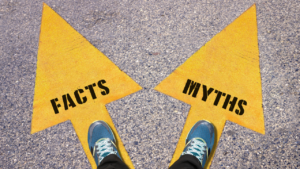Technological improvements have changed the methods used to locate a missing person. Private investigators, government agencies and police offices are now reliant on the effectiveness of new technology.
Digital Footprints
Online behavior enables individuals to be tracked using digital footprints including dangerous conversations and search habits and suspicious financial activities. Digital footprints include everything from security systems and traffic cameras with footage of the missing person’s face. The information obtained is combined to provide valuable resources for finding and saving the individual.
Geotargeting
Geotargeting is essentially a search engine with facial recognition. The search engine is capable of working 24/7 until the missing person is located. The process begins by creating a poster using the geotargeting engine containing information regarding the missing person. The poster is then sent to the Federation for Internet Alerts and local law enforcement. An alert is then sent to everyone located in the geographic area where the individual was reported as missing.
The process works by using advertising space available on a wide variety of individual websites. While consumers are searching the web, they see an alert featuring the missing person as opposed to advertisements for auto parts or clothing. According to the New York Times, a link is embedded in each alert. Clicking on the link brings up the poster of the missing person. These posters are viewed by millions of individuals with potential information regarding the case.
Facial Recognition Software
Geotargeting engines also use facial recognition software enabling a search to be conducted for pictures matching the missing person. One of the most important aspects of the software is the global nature. No matter how long the person has been missing, where they disappeared, their demographic, income or background, they can be located through the process of facial recognition. There are no limitations to the internet in this regard.
Facial recognition software uses artificial intelligence to narrow down the vast number of possibilities. This eliminates the need for the investigator to search through thousands of photographs in the hopes of finding the missing person. Every image looked at by the investigator has already been identified by the software as a potential lead. The same type of software is also used to locate exploited children whether or not they are technically missing.
Search Mapping, Sonar and Radar
Despite the ability of an online footprint to clarify the details of a missing person case, parts of the story are often missed. The majority of technological innovations have become familiar with the offenders. This means they know how to confuse the investigators while covering their tracks. These criminals can be outsmarted through the use of sonar tools, radar and search mapping. Search mapping enables pattern generations including all digital footprints left by the criminal.
This process decreases the amount of time investigators of the past required to locate the missing person for each individual case. No two offenders use the exact same procedures or plans. The way the criminal thinks can be identified faster and better than in the past through mapping. Once the investigator understands the thought process of the criminal, a much smaller list of potential perpetrators can be identified. This helps reveal the next steps of the criminal or where the missing person may have been taken.
Both sonar and radar are used to either discount or confirm these types of possibilities. The tools can conduct an underwater search or find body heat in an area difficult to see or covered. This often enables the missing person to be found.
The Speed of Technology
Modern systems used for tracking a missing person are much faster than human beings. The need to send police or entire search parties to check every possibility has been effectively eliminated. Modern technology enables the same thing to be accomplished faster by running algorithms, monitoring a variety of screens and watching suspects through a digital eye.


